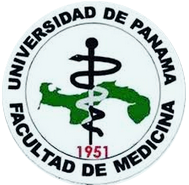Alteraciones Neurológicas por virus Zika: Revisión bibliográfica. (Neurological Alterations by the Zika virus: Bibliographic review)
[Alteraciones Neurológicas por virus Zika: Revisión bibliográfica. (Neurological Alterations by the Zika virus: Bibliographic review)]Anastasia Bellido Sokol1
1. Universidad Latina de Panamá.
Descargas
Resumen
[Neurological Alterations by the Zika virus]
Resumen
El propósito de la siguiente revisión es establecer la relación documentada entre las alteraciones del sistema nervioso y la presencia de la infección por el virus Zika. El virus Zika, perteneciente a la familia de Flaviviridae, es el responsable de la fiebre del Zika y en la mayoría de casos la manifestación clínica se presenta en forma leve en la población adulta.
El mayor interés se atribuye a los recién nacidos por ser el grupo etario más afectado a nivel neurológico por la virulencia del Zika. La presencia del transmisor del virus, mosquito hembra Aedes aegypti en el territorio de Panamá, representa un factor de riesgo para el aumento de la incidencia de la microcefalia en recién nacidos.
Abstract
The purpose of the following review is to establish the documented relationship between alterations of the nervous system and the presence of Zika virus infection. Zika virus, forming part of the Flaviviridae family, is responsible for the Zika fever and in most cases the clinical manifestation occurs mildly in the adult population.
The greatest interest is attributed to newborns since it is the age group that is mostly affected at the neurological level by the virulence of Zika. The presence of the viral transmitter, mosquito Aedes aegypti in the territory of Panama, represents a risk factor for the increase in the incidence of microcephaly in newborns.
Abstract
[Neurological Alterations by the Zika virus]
Resumen
El propósito de la siguiente revisión es establecer la relación documentada entre las alteraciones del sistema nervioso y la presencia de la infección por el virus Zika. El virus Zika, perteneciente a la familia de Flaviviridae, es el responsable de la fiebre del Zika y en la mayoría de casos la manifestación clínica se presenta en forma leve en la población adulta.
El mayor interés se atribuye a los recién nacidos por ser el grupo etario más afectado a nivel neurológico por la virulencia del Zika. La presencia del transmisor del virus, mosquito hembra Aedes aegypti en el territorio de Panamá, representa un factor de riesgo para el aumento de la incidencia de la microcefalia en recién nacidos.
Abstract
The purpose of the following review is to establish the documented relationship between alterations of the nervous system and the presence of Zika virus infection. Zika virus, forming part of the Flaviviridae family, is responsible for the Zika fever and in most cases the clinical manifestation occurs mildly in the adult population.
The greatest interest is attributed to newborns since it is the age group that is mostly affected at the neurological level by the virulence of Zika. The presence of the viral transmitter, mosquito Aedes aegypti in the territory of Panama, represents a risk factor for the increase in the incidence of microcephaly in newborns.
Citas
[1] Organización Mundial de la Salud. Enfermedad por el virus de Zika. Centro de Prensa. Septiembre de 2016. Disponible desde: http://www.who.int/mediacentre/factsheets/zika/es/
[2] Ershova I.B, Osipova T.F. Infección provocada por el virus de Zika. To Help Practitioner. (en línea) 2016; 2(11): 67-70.
[3] Mary Kay Kindhauser et al. Zika: the origin and spread of a mosquito-borne virus. Bull World Health Organ (en línea). 2016. 94:675–686C.
[4] Adam T Craig et al. Acute flaccid paralysis incidence and Zika virus surveillance, Pacific Islands. Bull World Health Organ (en línea). 2017; 95:69–75.
[5] Hajra A, Bandyopadhyay D, Hajra SK. Zika virus: New interest in neurology. Neurol India (en línea) 2016; 64:1102-4.
[6] Brenda Banwell. Zika virus: Paediatric neurology in 2016: a year in review. The Lancet Neurology (en línea). 2017; 16(1): 14-15.
[7] Norero et al. Zika y defecto del tubo neural. Pediátr Panamá. 2016; 45(1): 23-25.
[8] Ministerio de Salud, Gobierno de Panamá. Dirección General de Salud: Departamento de Epidemiologia. 16 de octubre de 2016. Disponible desde: http://www.minsa.gob.pa/sites/default/files/publicaciongeneral/boletin_34_zk_sem41.pdf
[9] Mendez-Rios, et.al., N. Zika en Panamá y Latinoamérica: Aspectos clínicos y moleculares de una problemática emergente. Rev Med Panama 2015; 35(3): 11-20. URL: http://www.revistamedica.org/index.php/rmdp/article/view/388
[10] Suvi Kuivanen et al. Obatoclax, saliphenylhalamide and gemcitabine inhibit Zika virus infection in vitro and differentially affect cellular signaling, transcription and metabolism. Antiviral Research (en línea) 2017; 139: 117–128.
Licencia
Derechos autoriales y de reproducibilidad. La Revista Médica de Panama es un ente académico, sin fines de lucro, que forma parte de la Academia Panameña de Medicina y Cirugía. Sus publicaciones son de tipo acceso gratuito de su contenido para uso individual y académico, sin restricción. Los derechos autoriales de cada artículo son retenidos por sus autores. Al Publicar en la Revista, el autor otorga Licencia permanente, exclusiva, e irrevocable a la Sociedad para la edición del manuscrito, y otorga a la empresa editorial, Infomedic International Licencia de uso de distribución, indexación y comercial exclusiva, permanente e irrevocable de su contenido y para la generación de productos y servicios derivados del mismo. En caso que el autor obtenga la licencia CC BY, el artículo y sus derivados son de libre acceso y distribución.









